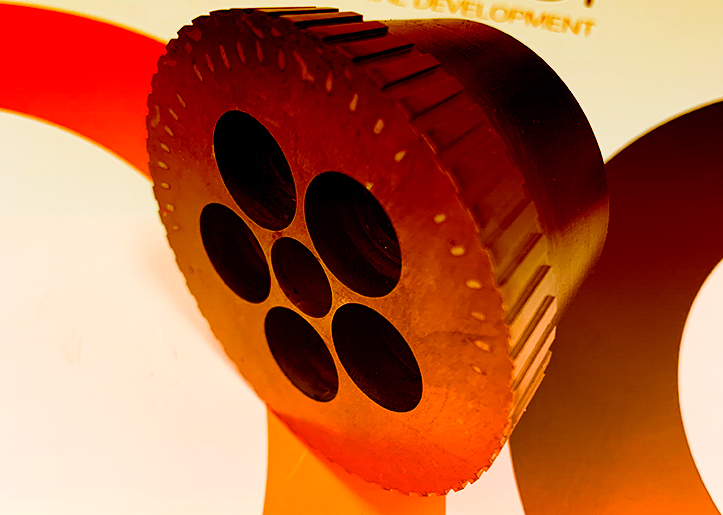Tempering is a heat treatment that is carried out on steel after hardening to achieve…

What types of stainless steel are there and what are they used for?
Know the different types of stainless steel that exist, their main qualities and advantages when manufacturing components.
What types of stainless steel are there and what are they used for?
Stainless steel is renowned and appreciated in many sectors of industry due to its high resistance to oxidation or corrosion, but it is not stainless in the literal sense of the word. What makes this steel more resistant to corrosion is its chromium content (minimum 10%, the percentage varying according to the type of steel), which forms a protective film (called passive layer) against the different corrosive agents that may come into contact with it. Although chromium is the main component, stainless steel may contain other alloying metals such as molybdenum or nickel.
According to their different types of alloys, their proportion and thermal treatments, we have five types of stainless steel: martensitic, ferritic, austenitic, duplex and precipitation hardened.
Main stainless steel types
Martensitic stainless steel
This type of stainless steel is part of the 400 series. It has a higher carbon content than the other types of steel (between 0.1 and 1.2%), chromium (between 10.5 and 18%) and molybdenum and nickel alloys. It has magnetic properties, moderate corrosion resistance (lower than that of austenitic steel, for example), and when subjected to high temperatures it hardens more, so it has greater mechanical strength. Martensitic stainless steel was the first to be developed for commercial use, being used in cutlery; it is now used for knife blades, pins, some surgical and dental instruments, machinery subjected to heat, wear and erosion, locks, arrows or bolts.
Ferritic Stainless Steel
This completes the 400 series. This steel is composed of carbon (10.5%), chromium (from 10.5 to 30%) and – in different grades – may contain aluminium, niobium, molybdenum, silicon and titanium. Ferritic stainless steel is very resistant to corrosion, is magnetic, does not harden at high temperatures (on the contrary, it hardens by cold working) and is not as ductile as other steels. It is used for washing machines (washing machines, dishwashers, etc.), kettles, in the automotive sector for combustion systems and trims, furniture, ornaments, building materials and chemical equipment.
Austenitic stainless steel
It is named after the austenite in its crystalline structure and usually consists of 18% chromium (can vary between 16 and 26%), 8% nickel, carbon (between 0.03 and 0.08%) and manganese and nitrogen to improve it. It is in the 300 series and is the most commonly used as it has superior corrosion resistance, is non-magnetic, easy to process and weld, has hygienic properties and works perfectly in extreme temperatures (both high and low). The versatility of austenitic stainless steel allows it to be used in chemical, kitchen ware washing, food processing, pharmaceutical, textile and photographic equipment; aircraft and railway fittings and parts; and hospital equipment.
Duplex Stainless Steel
Duplex stainless steel is a combination of the main elements of austenitic steel and ferritic steel, resulting in a steel with higher chromium and lower nickel content, bringing together the best of both steels. It is the most corrosion resistant of all stainless steel grades, can sometimes have magnetic properties and is weldable and easy to shape, making it the most expensive steel. It is most commonly used in marine, oil and gas machinery and tools; in the paper industry, in bridges and tanks of various types (storage, chemical, gas and pressure).
Precipitation hardening stainless steel
It brings together the best of martensitic and austenitic stainless steels. It is initially austenitic or martensitic and then altered with one or more elements (either copper, aluminium, titanium, niobium or molybdenum) by heat treatment to make it more corrosion resistant and harder. This type of steel is patented and uses the acronym of the producing company in its name. Precipitation hardened stainless steel is very useful in the manufacture of jets, rods and in the aerospace and military industries.
Which is the best stainless steel for machining
As stainless steel is the most resistant to the highest types of wear and corrosion, it is ideal for the machining sector. There are different degrees of corrosion resistance, as we have already seen, so the best types of stainless steel for this area are austenitic and ferritic.
EONSI, specialists in stainless steel machining
EONSI consolidates the different industrial sectors by being specialists in stainless steel machining. Our own stock of machinery allows us to help you in a wide range of services and manufacturing, adjusting delivery times according to your needs.



